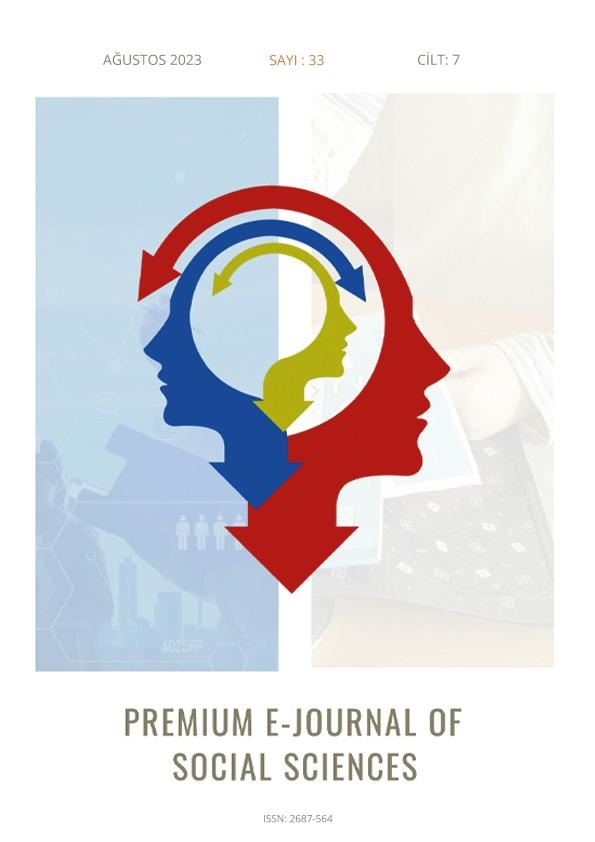Ottoman Period Botanical Painting and its Reflections to Contemporary Art, Design and Scientific Painting
DOI:
https://doi.org/10.5281/zenodo.8309687Keywords:
Botanic, Botanical Painting, Design, Art, IllustrationAbstract
Throughout history, the positive effects of plants on human health have been on the agenda of scientists dealing with medicine. Medicines and supplementary foods obtained from plants have been transferred from the past to the present and laid the groundwork for the formation of a very large library on this subject. The books of İbn-i Sina, known as Avicenna in European countries today, started to be taught as textbooks in western civilization universities. Apart from this, world-famous Muslim scientists and physicians such as Ali Bin Abbas, Ammar Musuli, Ali bin Isa, Abu Bakr er-Razi, Ibn Sina, İbn-i Nefis, Akşemsettin Hz, İbn-i Hatip, Abbas Vesîm Efendi, have worked in the field of medicine and medicine. They wrote many scientific works that contributed to the development of humanity in all aspects. In the Ottoman period, many medical scholars brought valuable works to the service of humanity with their works. Although the botanical painting, which came to the last period of the Ottoman period, was revealed as a result of meticulous and hard work, unfortunately, it did not receive the necessary attention after the Republic Period. Although botanical painting lessons have been given in many art courses in our country in recent years, the number of works prepared on this subject is still limited when compared to other arts. The research was carried out to examine scientific works on botanical subjects made in the Ottoman Period and today's botanical painting in terms of art and design.
Downloads
References
Acartürk, G. (2019). İllüstrasyonda Görsel Göstergelerin Anlatılması ve Mesaj. [Yüksek Lisans Tezi], Ordu Üniversitesi.
Akkurt, S., & Boratav, O. (2018). Neden Sanat Eğitimi. Uluslararası Eğitim Araştırmaları Dergisi, 55-57.
And, M. (2008). Minyatürlerle Osmanlı-İslam Mitologyası. Yapı Kredi Yayınları.
Başaran, D. (1991). Modern Genel Botanik. Dicle Üniversitesi Fen Edebiyat Fakültesi Yayınları.
Baytop, A. (2004). Türkiye’de Botanik Tarihi Araştırmaları. Tübitak Yayınları.
Bağcı, S. A., & Özer, İ. (2021, 12 15). Türkiye Tohumculuğunun Tarihsel Gelişimi, Mevcut Durumu, Problemleri ve Çözüm Önerileri. Iğdır Üniversitesi Fen Bilimleri Enstitüsü Dergisi, (11), 3562, 3563.
Bedirhan, Y. (2019). İslam Öncesi Türk Tarihi Ve Kültürü. Eğitim Yayınları.
Buyurgan, S., & Buyurgan, U. (2007). Sanat Eğitimi ve Öğretimi. Pagem A Yayıncılık.
Çavuş, H., & Beyaz. (2020). Çeşitli Ülkelerden Örneklerle Bilimsel Bitki İllüstrasyonlarının Grafik Açıdan Değerlendirilmesi Ve Tarihsel Süreçte Gelişimi. [Yüksek Lisans Tezi] Kastamonu Üniversitesi.
Çoruhlu, Y. (2007). Erken Devir Türk Sanatı. Kabalcı Kitapevi.
Çiftçi, A., Harpke, D., Mollman , R., & Yıldırım, H. (2022,). Notes on Crocus L. Series Flavi Mathew (Iridaceae) and a new species with unique corm structure. Phytotaxa, 65-79.
Darlo, A. C. (2014). Sanatın Sonundan Sonra. Aram Yayınları.
Demiriz, Y. (2007). Yüzyıllar Boyunca Çiçek Ressamlığı. Yorum Sanat Evi Yayınları.
Ekşioğlu, N. U. (2022). Çikolata Tadında Sanat. İzlekler Yayınevi.
Erzen, J. (1999). Mekan Ve Sahneleme: 16. Yüzyılda Osmanlı Mimarisi ve Resim Sanatı. Yem Yayınları.
Grabar, O. (2010). İslam Sanatının Oluşumu. Kemal Kitap.
İhsanoğlu, E. (2010). Darül Fünun, Osmanlı’da Kültürel Modernleşmenin Odağı. İstanbul. Ircıca Yayınları.
İpşiroğlu, N. (2010). Görsel Sanatlarda Alımlama ve Sanatlararası Etkileşim. Hayalbaz Kitap.
İslimyeli, N. (2005). Suluboya Resim Sanatı Tarihi. T.C. Kültür Bakanlığı Yayınları.
Marie, P. J., Mazayel, M., Monod, T., & Gırardon, J. (2022). Bitkilerin En Güzel Tarihi. T.C. İşbankası Yayınları.
Mollman, R. (2022). Botanik Çizimi Hakkında Görüşme. (İ. B. Bölümü, Dü.) İ.Ü. Botanik Bölümü.
Neriman, & Görgünay. (1986). El Sanatları Eğitimi. 1, 32.
San, İ. (2003). Sanat Eğitimi Kuramları. Ütopya Yayınları.
Thalasso, A. (2008). Osmanlı Sanatı Türkiye’nin Ressamları. İBB Kültür A.Ş. Yayınları.
Thascen, B. (1993). Kahlo. Druchaus Cramer Gmbh.
Turan, E., & Kurşun, A. (2018). İstanbul Ünivesitesi Biyolojik Bellek Kolleksiyonları (Cilt 3). (N. T. Kitapevleri, Dü.) Nobel Tıp Kitapevleri.
Yılmaz, İ., & Ayçe, T. (2021). Koronavirüs (Covıd-19) Afişlerinde Yer Alan Piktogramların Grafik Tasarım Çerçevesinde İncelenmesi. Pearson Journal Of Social Sciences & Humanities, 78.
URL-1: www.iienstitu.com/blog/botanik-nedir (08.02.2022)
URL-2: https://acikradyo.com.tr/botanitopya/ronesans-sanati-ve-ilk-gercekci-bitki-cizimleri (03.04.2022)
URL-3: www.tv5.com.tr/dunyanin-bilinen-ilk-halisi-nigdede-yeniden-dokundu (19.02.2022)
URL-4: www.tv5.com.tr/dunyanin-bilinen-ilk-halisi-nigdede-yeniden-dokundu (19.02.2022)
URL-5: www.tarihikadim.com/osmanli-minyaturu-hakkinda-ogrenilmesi-gereken-7-bilgi/
(01.02.2022)
Downloads
Published
How to Cite
Issue
Section
License
Copyright (c) 2023 Premium e-Journal of Social Science (PEJOSS)

This work is licensed under a Creative Commons Attribution 4.0 International License.


